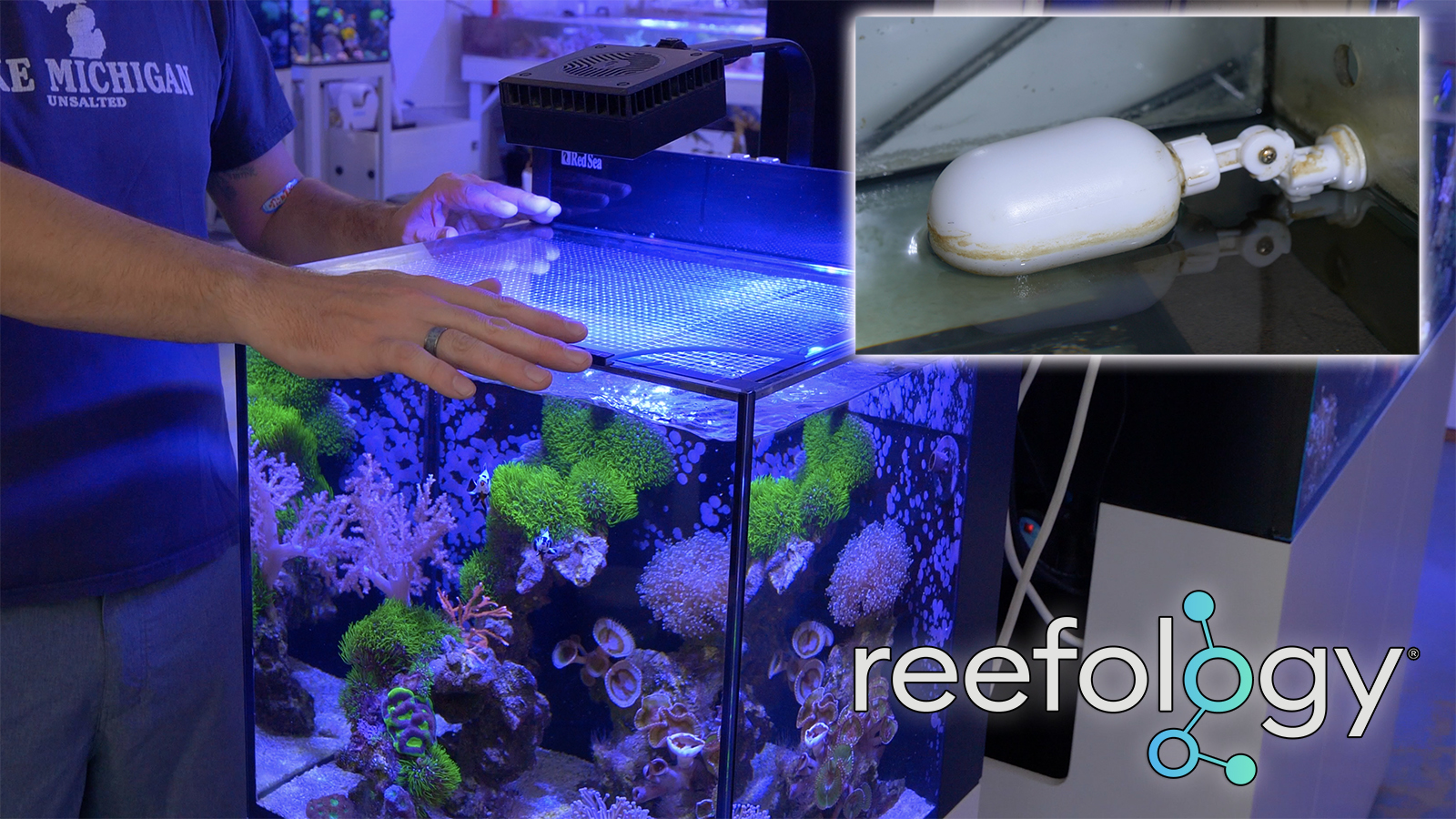After you’ve learned how to mix proper seawater for your marine/reef/saltwater aquarium, the next most important concept to understand is the management of evaporation, and the automatic replenishment of water lost to evaporation. Whether you have a nano aquarium with a simple hang on the back filter, a medium sized tank with a built-in all in one, or a fully fledged reef tank with a large sump, it is paramount to keep a stable water level for the filters to work properly, but more importantly to maintain an appropriate salinity.
There once was a time when mini reef keepers employed a wide variety of techniques to automatically replenish freshwater lost to evaporation including drippers, glug jugs, float valves and early versions of float switch activated pumps. But over the last decade the old school tricks have become all but forgotten, being almost totally drowned out by auto top off machines that cost more than ten times the price of a basic float valve.
For sure it’s simpler to sell someone an ATO machine to make up evaporated water, and it’s not practical to install a float valve on most nano reefs and some all in one aquariums, but for some of these applications a glass or acrylic lid will minimize water loss nearly as much as an ATO with unmitigated evaporation. It surely is a lot easier to add an auto top off device to a saltwater aquarium after the fact, but for a hobby that prides itself on research and planning, it really doesn’t take too much effort to install a mechanical float valve for easy and reliable ATO on any reef tank with a sump.
An electronic ATO device will have at least a power supply, a pump, a float switch (or two) and a controller for somewhere between four and five potential points of failure whereas having a single float valve, which is a very robust mechanical device used in many industrial applications, is so much more reliable that we are puzzled as to why they aren’t used more often. Surely the fact that ATO devices cost between $100 and $200, and a float valve is closer to $10, has nothing to do with what stores and online vendors choose to promote to their customers. Furthermore a 20 year old float valve works just as well today as it did in 2001, but you’d be hard pressed to find any auto top off machines lasting more than five years without issue, repair, or replacement.
For our purposes at the Reef Builders Studio we can use a single elevated water reservoir to supply water to nearly every system in the creative space and we can daisy chain the freshwater supply line to numerous float valves up to 60 feet away from the reservoir. In this second installment of our Reefology video series we demonstrates the three different ways we manage evaporation on the tanks around the studio and for nearly all of these, a simple mechanical float valve is an accessory in which we have complete faith for adding make up water as it evaporates from our many different aquariums.



